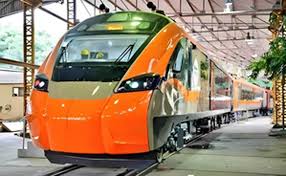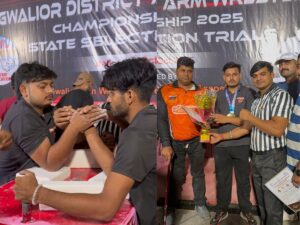“Indian Railways to Introduce 200 New Vande Bharat Trains Over the Next 2-3 Years, Announces Ashwini Vaishnaw”
In a significant announcement following the presentation of the Union Budget 2025-26, Union Railways and Electronics and IT Minister Ashwini Vaishnaw revealed that Indian Railways is set for a major expansion, with plans to introduce “200 new Vande Bharat trains, 100 Amrit Bharat trains, 50 Namo Bharat rapid rail, and 17,500 general non-AC coaches” within the next two to three years.


In a significant announcement following the presentation of the Union Budget 2025-26, Union Railways and Electronics and IT Minister Ashwini Vaishnaw revealed that Indian Railways is set for a major expansion, with plans to introduce “200 new Vande Bharat trains, 100 Amrit Bharat trains, 50 Namo Bharat rapid rail, and 17,500 general non-AC coaches” within the next two to three years.
The announcement came as the Union Budget allocated a record Rs 2,52,000 crore as gross budgetary support to the Ministry of Railways for the financial year 2025-26, marking the second consecutive year of such substantial funding. Vaishnaw expressed his gratitude towards Prime Minister Narendra Modi and Finance Minister Nirmala Sitharaman for their continued support to the growth of Indian Railways.
The ambitious expansion plan aims to significantly improve rail travel infrastructure across the country, focusing on providing safer, faster, and more comfortable travel options, especially for the middle and lower-income segments. “The new trains and modern coaches will go a long way in serving the low and middle-class people,” Vaishnaw stated, highlighting the importance of making rail travel more accessible to all.
The Budget also outlines an infrastructure development plan for Indian Railways amounting to Rs 4,60,000 crore. As part of the government’s commitment to safety, Rs 1,16,000 crore has been earmarked for safety-related projects to enhance the security and reliability of the Indian Railways network.
One of the key aspects of the Budget is the focus on reducing the financial burden on middle-class families. Vaishnaw emphasized that the Budget not only invests in infrastructure to generate employment but also provides significant relief to taxpayers by reducing income tax rates.
Further, the reimbursement for losses incurred from the operation of strategic railway lines has been set at Rs 2,739.18 crore for FY 2025-26, up from Rs 2,602.81 crore in the previous fiscal’s Revised Estimates. The government has also allocated Rs 706 crore for the debt servicing of market borrowings used to fund national railway projects.
As part of its efforts to increase freight capacity, Indian Railways is poised to become the second-highest freight carrier globally, with a target of transporting 1.6 billion tonnes of cargo by the end of the current fiscal year.
In terms of long-term goals, India is targeting the establishment of a high-speed rail network spanning 7,000 km by 2047, with trains operating at speeds of up to 250 km per hour. Additionally, the ministry plans to achieve 100% electrification of Indian Railways by the end of FY 2025-26, contributing to the government’s broader sustainability goals. Indian Railways will also take a leading role in the adoption of non-fossil energy sources, such as small modular reactors, to further reduce its carbon footprint.
The Budget’s provisions and Vaishnaw’s announcements signal an exciting phase for Indian Railways, with transformative changes on the horizon that are set to enhance passenger experience, safety, and sustainability while meeting the growing demand for freight services.
Sources By Agencies








💥 FreeSpin Veren Siteler ile Kazancınızı Arttırın ve şansınızı KeŞfedin! 💥 Kazancınızı Arttırmak İçin Hemen FreeSpin ile Başlayın, Büyük Ödülleri Kazanın! https://kusadasi-bayans10.citiescort.com/
Your blog post was the perfect blend of informative and entertaining. I couldn’t tear my eyes away from the screen!
Your passion for this topic is contagious! After reading your blog post, I can’t wait to learn more.
selamat datang di bandar togel terbaik, rtp slot resmi dan terpercaya
selamat datang di bandar togel terbaik, situs toto resmi resmi dan terpercaya
Your passion for this topic is contagious! After reading your blog post, I can’t wait to learn more.
Your blog post was exactly what I needed to hear today. Thank you for the gentle reminder to practice self-care.
I’ve been struggling with this issue for a while now, and your blog post provided some much-needed clarity. Thank you for shedding light on the subject.